Master Your Child’s Skills with Free Grade 5 Verbal Sample Questions
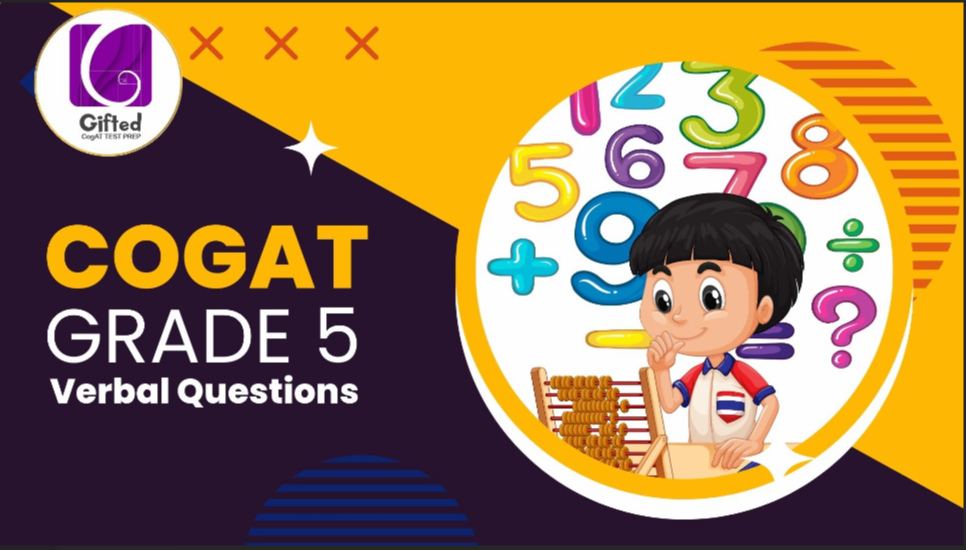
Sometimes, for parents, inquisitive questions like “How does photosynthesis work?” or “Why is the earth round?” can be challenging to answer. There is a high chance that these questions are coming from not just innocent but gifted minds.
If your child’s curiosity knows no bounds, you might be wondering if he/she is one of those exceptionally bright individuals. Enter the CogAT test, designed to uncover and nurture the talents of gifted students.
In this blog, we’ll dive into the world of CogAT test questions for grade 5, shedding light on what to expect and how to prepare for this intriguing examination.
The Gifted Test
CogAT, also referred to as the “gifted test,” is more than just a standard assessment. It’s an exam that helps teachers and parents understand the schoolgoer’s cognitive abilities, strengths, and areas for improvement. While the assessment gauges your learner through three batteries – verbal, quantitative, and nonverbal.
Here are some more details about verbal battery:
The Verbal Battery
This battery of the cognitive assessment test is designed to measure your kid’s verbal reasoning skills. It is further divided into three sections, each with its own unique set of challenges. Let’s take a sneak peek into one of them:
1. Picture analogies
Imagine your child is shown three pictures: a cat next to a mouse, a dog next to a bone, and a bird next to a worm. Then, he/she is presented with a picture of a horse and three options for pairing it with another picture. To succeed, your fifth grader must recognize the relationship between the first set of pictures and apply that logic to select the correct pair for the horse.
This section assesses your young mind’s ability to identify and understand relationships between objects and concepts.
2. Sentence completion:
In this area, your child will encounter sentences with a missing word or phrase. He/she must choose the word or phrase that best completes the sentence logically and grammatically.
Here, your precious would need to select the appropriate word to complete the sentence, demonstrating his/her vocabulary, grammar, and comprehension skills.
3. Picture classification:
In picture classification, your minor will be presented with a group of pictures, and he/she must identify which one doesn’t belong and explain why.
This subset measures your junior’s ability to categorize objects and understand the relationships between them.
For better understanding, we have shared CogAT practice questions from the verbal battery below
For the CogAT practice test MCQs for grade 5, click here
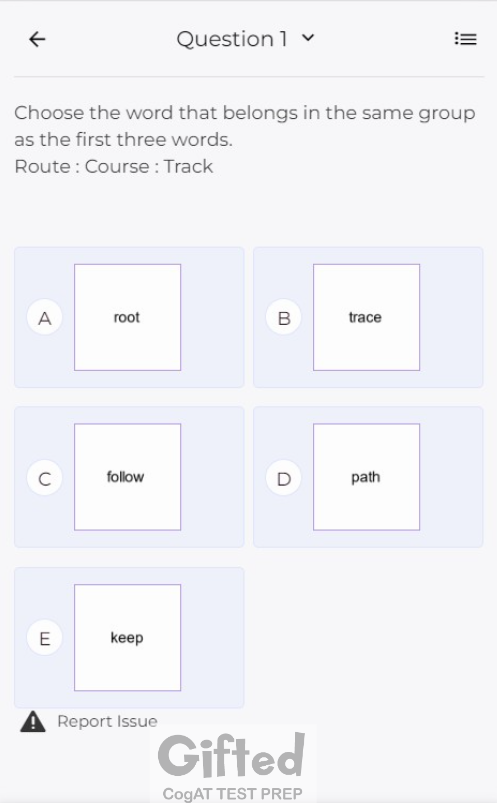
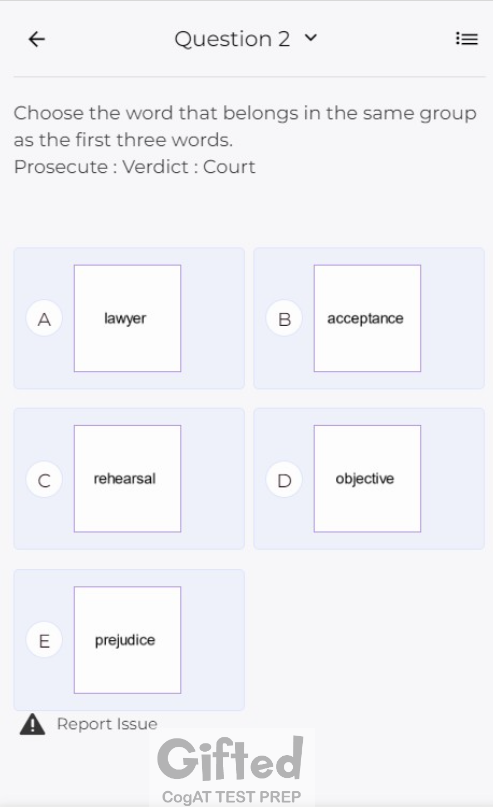
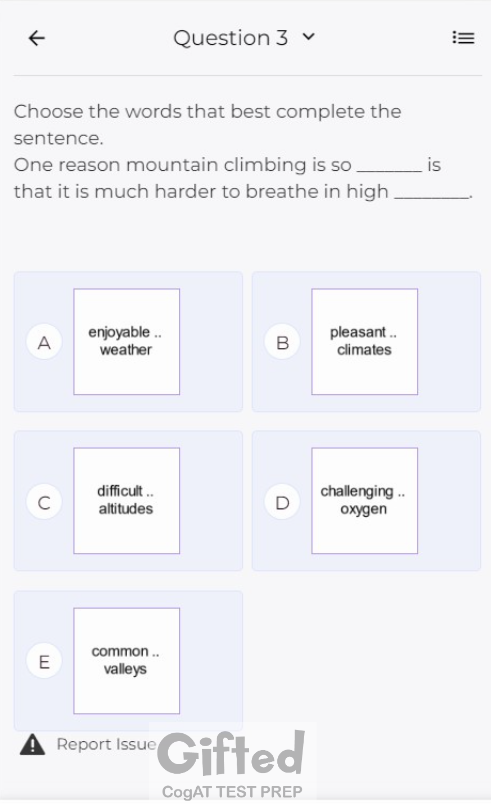

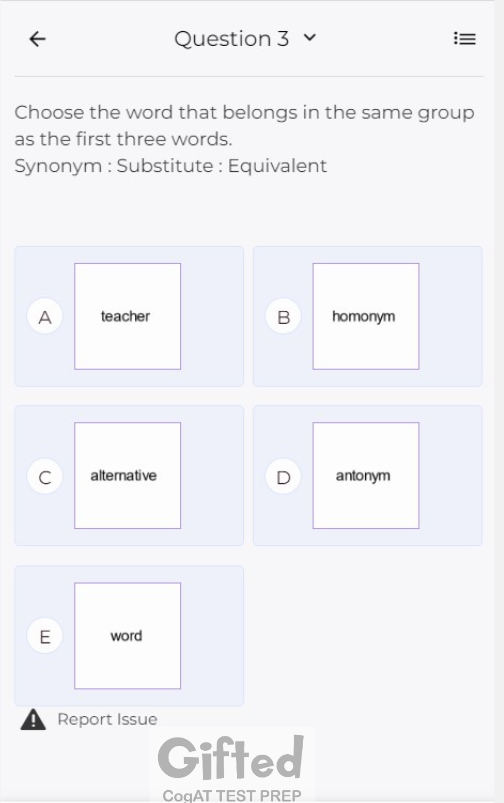
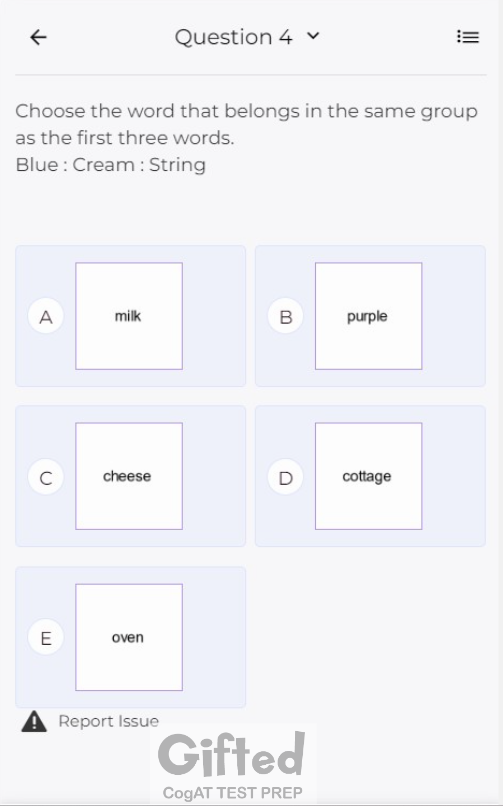
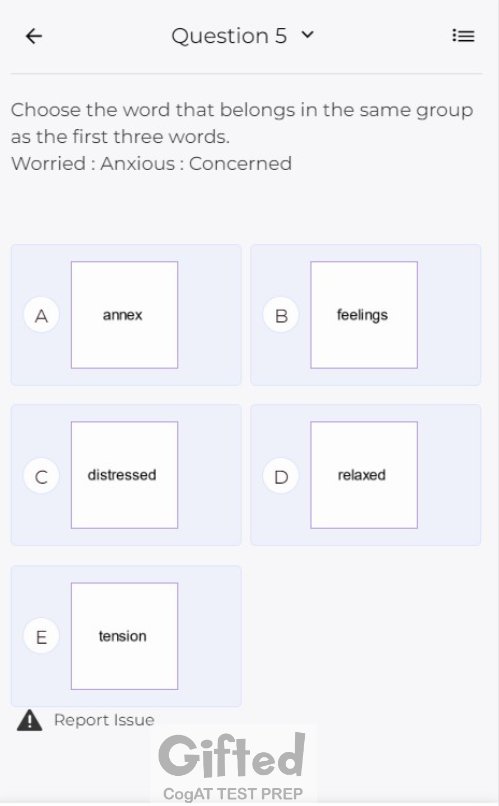

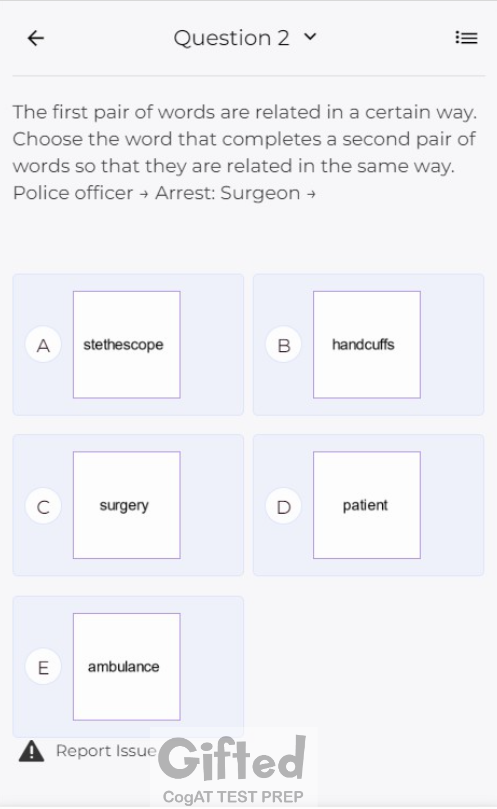

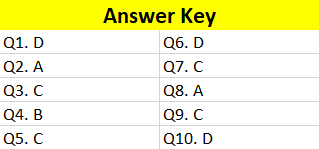
For explained solutions, click here.
As you set out on the journey to prepare your fifth-grade child for the gifted test, take a moment to explore the enriching possibilities offered by the Gifted CogAT Test Prep App. This platform is a valuable resource, containing a diverse array of over 10,000 practice MCQs that cover all three batteries of the CogAT test. It’s suitable for children ranging from kindergarten to grade 5. However, it’s essential to remember that the goal of CogAT isn’t solely about achieving high scores.
While the app is a helpful tool, nurturing a genuine passion for learning is equally crucial. Encourage curiosity and develop analytical thinking as integral parts of your kid’s preparation.
In addition to utilizing the Gifted App’s features, engage your little one in meaningful discussions, encourage diverse reading, and promote verbal expression to foster mental growth. By adopting this approach, you’ll not only prepare your young scholar for the upcoming test but also equip him/her with lifelong skills that extend far beyond the exam hall.
——————–
Cognitive Abilities Test™ (CogAT®) is a registered trademark of Riverside Assessments, LLC and its affiliates (“Riverside”). Riverside does not sponsor or endorse any Gifted.achieve.ai products or programs, nor has this gifted.achieve.ai product or program been reviewed, certified, or approved by Riverside. The questions used by gifted.achieve.ai are Gifted.achieve.ai’s own materials, created based on publicly available information, and in no way do they correspond to actual CogAT® testing materials. Gifted.achieve.ai uses practice materials only; not actual test questions. Trademarks referring to Riverside are used for nominative purposes only and such trademarks are solely the property of their respective owner.